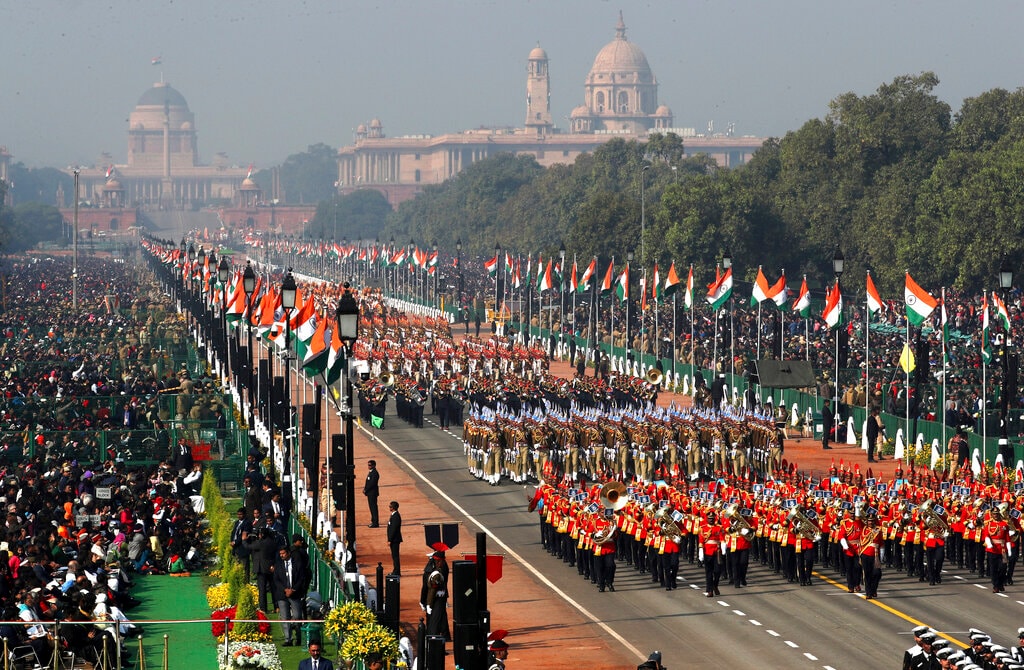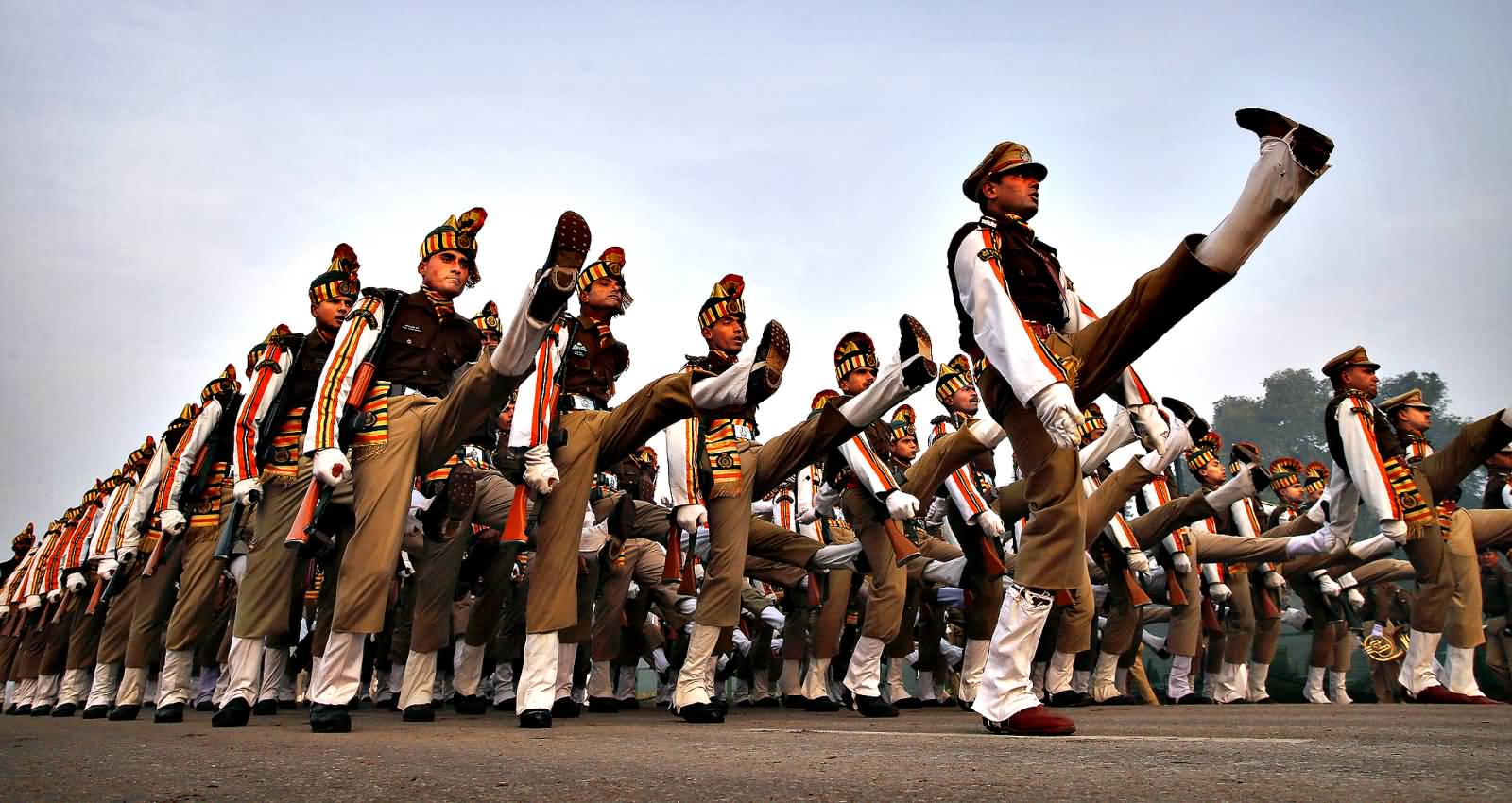
Covid-Challenged India Slashes Arms Spending
William Thomas / William Thomas Online
(May 24, 2020) — Imagine the US Ministry of Defence announcing a 40% cut in its military budget.
In the midst of an escalating economic crisis, with eye-watering budget cuts pending, that’s what India’s first Chief of Defence Staff, General Bipin Rawat, announced on May 20, 2020.
“We are not expeditionary forces that have to deploy around the globe,” General Rawat remarked, emphasising that Indian armed forces only need to “guard and fight” along the country’s borders.
Gen. Rawat now laments how India’s military convinced that country’s civilian politicians to buy unnecessary weaponry from “abroad” — primarily, the USA. Egged on over the past 15 years by a superpower born and wedded to violence and now driven into precipitous decline by its own military-corporate-congressional-entertainment complex, India has become the third biggest arms-buyer on Earth.
As a result, India boasts a hair-trigger “nuclear arsenal capable of taking on all major powers,” reporter Shishir Upadhyaya proudly writes — without explaining how India expects to “take on” nuclear-armed Pakistan without suffering mutual annihilation within hours.
Today, India’s defence establishment is asking: is a $71.1 billion annual arms expenditure sustainable in a post-Covid-19 economy? In a country where 360 million people are “surviving on a razor’s edge,” one-in-five children are malnourished, and 3,000 infants are dying every day — does India really need a third sitting-duck aircraft carrier, more nuclear bombs, or all those officers consuming half the defence budget in salaries and pensions while they look for trouble with Pakistan?
The world’s soon-to-be most populous country is not about to disarm. But Covid’s wake-up has pushed Delhi into looking at Russia’s cost-efficient model of updating older weapons to ensure a maximum defense against NATO encroachment, without destroying its economy.
And cutting 40% of India’s war budget is a good start.
“Now seems a good time to pause and take stock,” reporter Shishir Upadhyaya. suggests. “In a post-Covid-19 world, where global military spending will be in decline, reviewing and restructuring the nation’s military requirements in a cost-effective manner would seem to be a wholly sensible approach.”
Especially as Super-Cyclone Amphan and Typhoon Vongfong remind everyone of real climate threats that military priorities and pollution are only making worse.

Is the Covid-19 Financial Crash the Right Time for India to Cut 40% of Military Budget? It May Be, If Played Right
(May 20, 2020) — India ranks behind only the US and China for military spending. With massive budget cuts coming, it needs a model that gets it more for its money — like Russia’s.
Faced with an impending economic crisis, India is looking to review its military spending. Following indications by the Ministry of Defence that the military budget could be cut by up to 40 percent, India’s first Chief of Defence Staff (CDS), General Bipin Rawat, has called upon the armed forces to reduce their dependence on arms imports, rein in further spending and focus on increasing locally produced arms.
“We are not expeditionary forces that have to deploy around the globe,” he said, emphasising that Indian armed forces only need to “guard and fight” along the country’s borders and dominate the Indian Ocean region.
Over the past 15 years, India — with tacit support from the United States — has embarked on a defence modernisation programme to keep pace with military developments in China and maintain superiority over Pakistan.
As a result, India has emerged in recent years as the one of the world’s largest arms buyers. According to the latest report on global military spending by the Stockholm International Peace Research Institute (SIPRI), India was ranked third in 2019 after the US and China, with a budget of $71.1 billion. But in a post-Covid-19 economy, is this expenditure sustainable, and does India actually require such massive military capability?
Influenced by the US
Some experts in India believe that the country has bought too much into the ‘doctrine of interoperability’ promoted by the Americans, particularly since 2016, when India was elevated to a ‘Major Defense Partner’ by the United States. Consequently, General Rawat believes that over the years the Indian military has misrepresented its operational requirements and sought to convince the country’s politicians to buy unnecessary weaponry from abroad.
The CDS would like to see more “realistic” requirements for equipment from the military staff.
But there are many from the military who disagree. Lt Gen Harwant Singh, former Deputy Chief of the Indian Army, warned against any rethink, emphasising that historically the “outcome of battles was heavily tipped in favour of the quality of the weapon,” and suggesting that India can ill- afford to downsize its military capability.
India’s vastly expanded defence capability seems to have boosted the confidence of the military to undertake unprecedented bold actions across the border with Pakistan and stand off against China during the Doklam crisis in 2017.
The fact that cross-border terrorism from Pakistan has reduced drastically, and that Sino-India relations are now warming up, is testament to India’s improved military standing and should not be mistaken as a sign of improved bilateral relations. In all likelihood, India will continue to face hostility from its neighbours in the foreseeable future, and so restricting arms imports at this stage could compromise the country’s national security.
Defence technology requires huge investment and years of intensive research. As it stands, India’s military industrial complex is still underdeveloped and has limited capacity to produce sophisticated weaponry. To address this, the country has imported technology from abroad.
For instance, with Russian support, India has achieved self-sufficiency in shipbuilding and missile tech. But, funding for research and development is still a small fraction of India’s overall defence budget, and with less set to be spent, there simply won’t be enough money to upgrade all weapons, let alone to invest in locally produced efforts.
Following the Russian Model
But what can’t be denied is that there are areas where cuts can be made. Over half the budget, for example, is used to pay salaries and pensions, a figure that is the highest in the world.
In contrast, Russia, which is ranked fourth in budget spend after India by SIPRI, fields a military that’s almost 900,000 strong, with a conventional and nuclear arsenal capable of taking on all major powers. While it is true that Russia does not buy expensive weapons from the West, this can also be attributed to the Russian military developing a coherent strategy, despite a steady reduction in spending from 2011 until 2018.
Over the years, Russia has successfully modernised vintage Soviet platforms by adding new components, making them almost as effective as new platforms at a fraction of the cost.
For instance, Russia’s highly advanced air defence set-up is built upon the extensive Soviet system, but incorporates the latest electronic warfare capabilities that can counter perceived US advantages.
Another example is the strategy adopted by the legendary Admiral Sergey Gorshkov, an advocate of the approach “Better is the enemy of good enough.” Based on this, Gorshkov revamped and expanded the early Soviet Navy into a major sea power, using a mix of old and new systems to maximum effect.
What India Could Do
While India has used a similar approach reasonably successfully to integrate local platforms with Western and Russian systems, there is more military planners could do to rein in costs.
For instance, Admiral Arun Prakash, former chief of the Indian Navy, suggests that the air force could invest in more missiles if there isn’t enough money to import new fighter planes. Similarly, General Rawat recommends that the navy could buy more submarines rather than a third aircraft carrier.
As one of the world’s largest military spenders, India has significantly improved the capabilities of its armed forces. But now seems a good time to pause and take stock. In a post-Covid-19 world, where global military spending will be in decline, reviewing and restructuring the nation’s military requirements in a cost-effective manner would seem to be a wholly sensible approach.
Posted in accordance with Title 17, Section 107, US Code, for noncommercial, educational purposes.